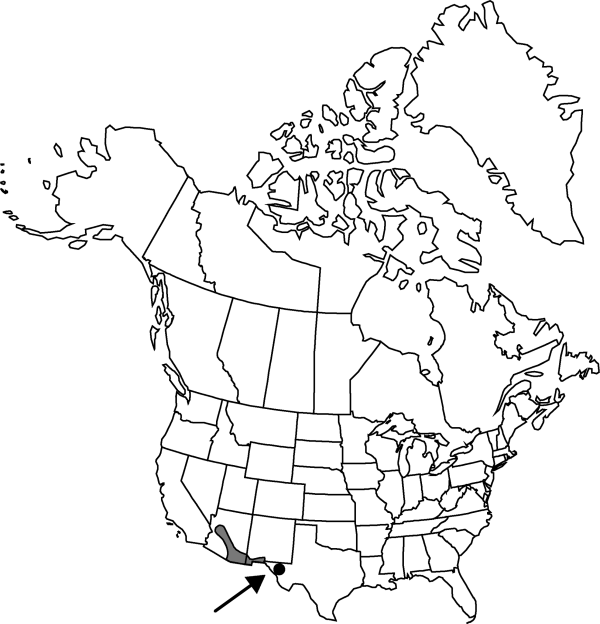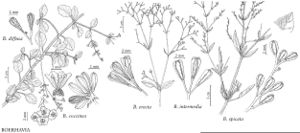Difference between revisions of "Boerhavia spicata"
in A. P. de Candolle and A. L. P. P. de Candolle, Prodr. 13(2): 456. 1849.
FNA>Volume Importer |
imported>Volume Importer |
||
| Line 6: | Line 6: | ||
|place=13(2): 456. 1849 | |place=13(2): 456. 1849 | ||
|year=1849 | |year=1849 | ||
| + | }} | ||
| + | |special_status={{Treatment/ID/Special_status | ||
| + | |code=F | ||
| + | |label=Illustrated | ||
}} | }} | ||
|basionyms= | |basionyms= | ||
| Line 45: | Line 49: | ||
|publication title=in A. P. de Candolle and A. L. P. P. de Candolle, Prodr. | |publication title=in A. P. de Candolle and A. L. P. P. de Candolle, Prodr. | ||
|publication year=1849 | |publication year=1849 | ||
| − | |special status= | + | |special status=Illustrated |
| − | |source xml=https:// | + | |source xml=https://bibilujan@bitbucket.org/aafc-mbb/fna-data-curation.git/src/bb6b7e3a7de7d3b7888a1ad48c7fd8f5c722d8d6/coarse_grained_fna_xml/V4/V4_39.xml |
|genus=Boerhavia | |genus=Boerhavia | ||
|species=Boerhavia spicata | |species=Boerhavia spicata | ||
Revision as of 23:14, 27 May 2020
Herbs, annual; taproot tapered, soft or ± woody. Stems erect or ascending, sparingly branched throughout, 30–70 dm, densely glandular-villous, or glandular-puberulent, with spreading, nonglandular hairs basally, glabrous distally. Leaves mostly in basal 1/2; larger leaves with petiole 10–30 mm, blade oval, oblong, ovate, or ± triangular, 18–45 × 13–30 mm (distal leaves usually smaller, sometimes longer, proportionately narrower), adaxial surface lightly to densely glandular-pubescent, abaxial surface paler than adaxial, lightly to densely glandular-pubescent, neither surface punctate or both minutely punctate with clusters of brown cells, base truncate, round, or obtuse, margins sinuate, sometimes crisped, apex round to obtuse, rarely acute. Inflorescences terminal and axillary, branched 1–4 times unequally, with sticky internodal bands; branches strongly ascending, terminating in spicate or racemose flower clusters, axis 10–55 mm. Flowers: pedicel 0.4–2.3[–3.7] mm; bracts at base of perianth usually soon deciduous, usually 2, narrowly to broadly lanceolate, 0.7–1.8 mm, apex often acuminate; perianth white to pale pink, campanulate distal to constriction, 1–1.3 mm; stamens (2–)3, slightly exserted or included. Fruits 5–33 per cluster, usually overlapping or 2–4 in group separated by small gap from next group, straw colored to grayish or reddish tan, broadly obovoid, 1.9–2.4(–2.8) × 1.1–1.3 mm (l/w: 1.7–2.1[–2.3]), apex rounded, glabrous; ribs 5, obtuse-rounded to obtuse, often with low winglike ridge, slightly rugose near sulci; sulci (0.2–)0.5 times as wide as base of ribs, slightly rugose, not papillate. 2n = ca. 52.
Phenology: Flowering late summer–early fall.
Habitat: Sandy or rocky soils in open, arid grasslands, among open shrubs or mesquite and acacia woodlands [tropical deciduous forests]
Elevation: [100-]700-1800 m
Distribution

Ariz., N.Mex., Tex., Mexico.
Discussion
C. F. Reed (1969) and subsequent authors have included one or more of Boerhavia coulteri, B. torreyana, and B. watsoni as synonymous with B. spicata. Even when those taxa are removed, B. spicata remains a variable species, widespread at low to middle elevations in southwestern North America, and distinguished by its mostly overlapping, obovoid fruits with rather open sulci, and the glandular pubescence on basal parts of the plant.
Selected References
None.
